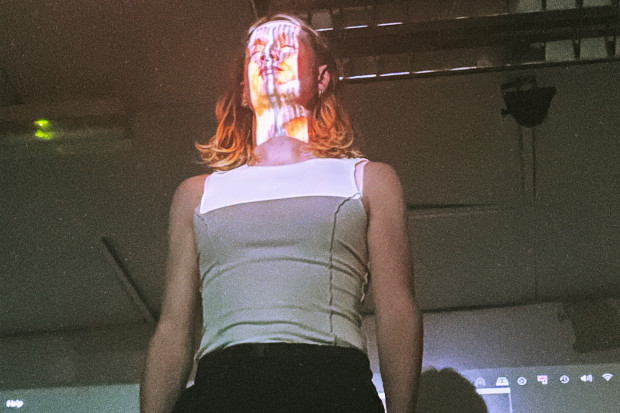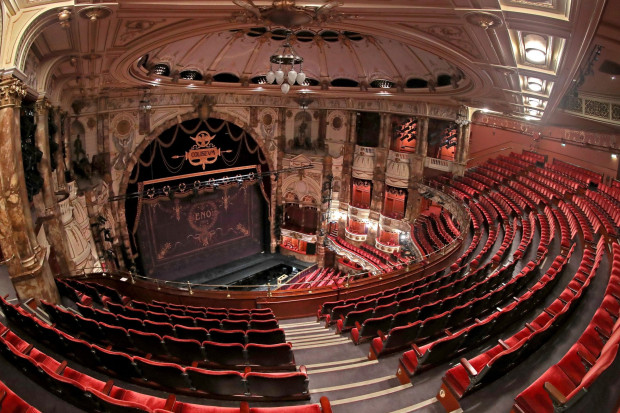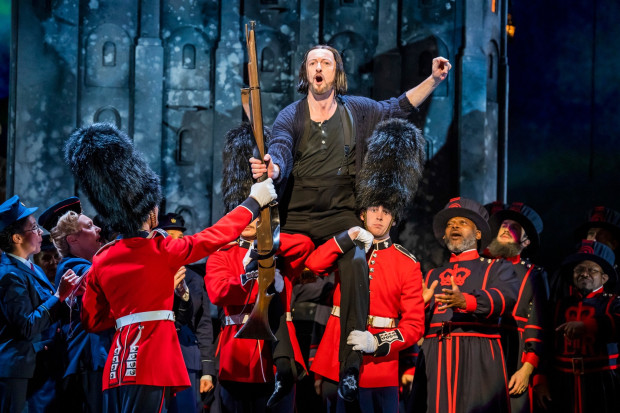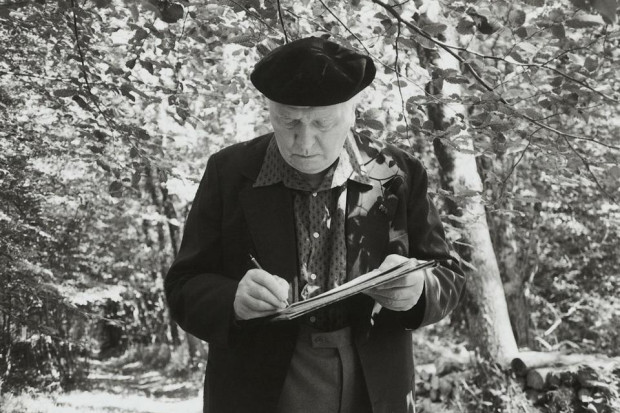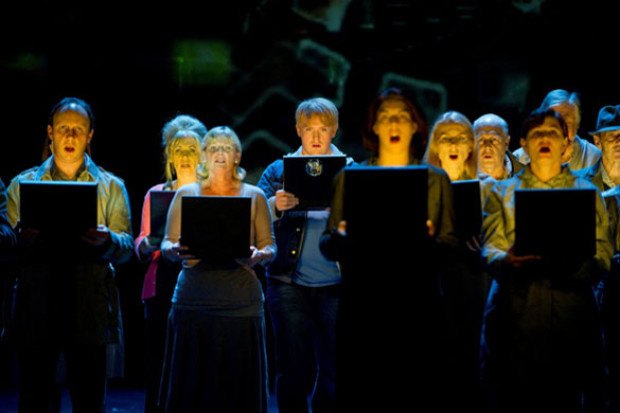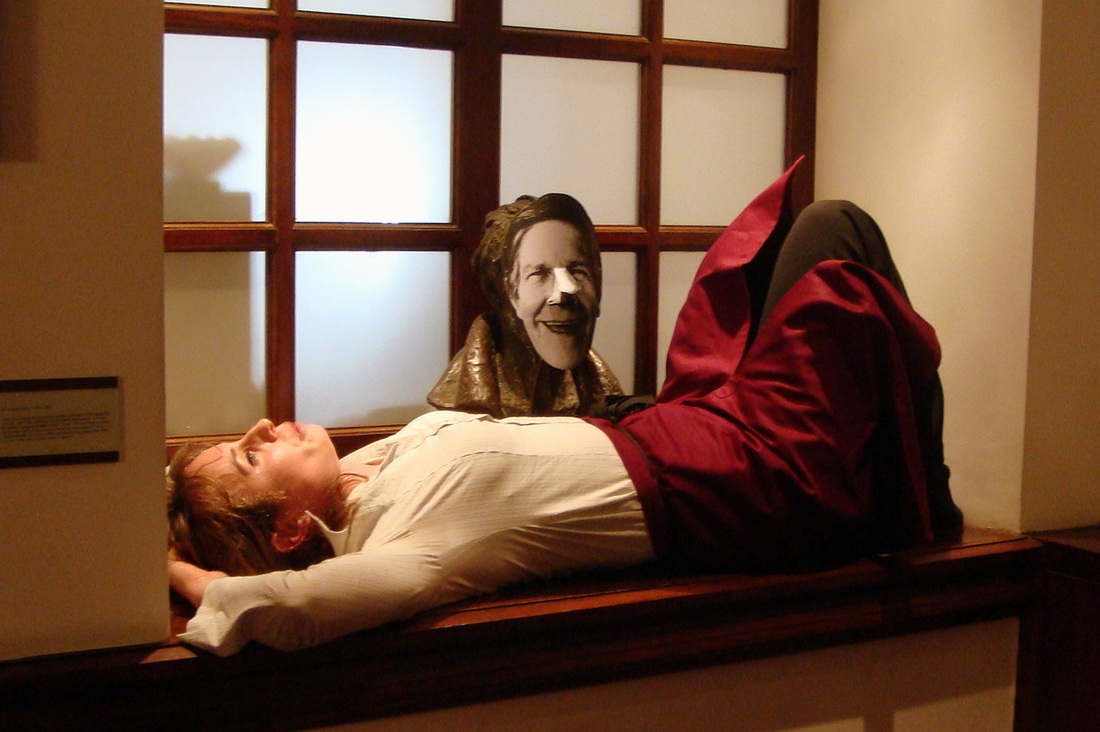
Mezzo-soprano Valerie Reid in front of a portrait of John Cage.
Credo in JC
Musicircus
ENO, Coliseum, London, 3 April 2012.
William S. Burroughs once said of Freud that, although he admired his thought, he was left uneasy by the spread of his couch (the directing of Freud’s ideas, that is, into the foundation of a modern church). This is along the lines of how I feel about John Cage. Although I find much to admire in Cage’s thought and much of interest in his music, and furthermore consider him to be a composer whose true importance hasn’t yet been fully realised, I’m always left uncomfortable about the John Cage personality cult: Cage’s sermonising in the egotistical register of Walt Whitman’s ‘What I assume, you shall assume’ and the consequent hero-worship of Cage as a liberator of sound.
English National Opera’s production of Musicircus — a staging full of excellent performers, abundant in activity — typified this ambivalence. Musicircus was first performed in 1967, the year of the Summer of Love. Its score directs a number of musicians and performers to perform different works in a suitably sized venue at around the same time, the only real stipulation being that the whole performance should run over a specified duration. What the performers wish to perform is up to themselves. Part 1960s happening and part interactive music theatre, Musicircus comes from the same era as Kagel’s Staatstheater and Berio’s Passaggio, and is potentially a lot of fun for performers and audience alike. So it was here. Walking around a venue, with spontaneous sound-collages bring thrown up here and there, was fascinating — like being inside a live piece of musique concrète.
As I entered through the foyer of London’s Coliseum, a brass band in naval uniforms played the theme from The Pink Panther. In the corridor a flautist played snatches of different contemporary classical works. A multicolour-garbed choir sang ‘Home on the Range’. For a while I played dice with a girl wearing a red dress, six-inch platforms, and a horse-head mask, who after I’d thrown the dice a few times gave me a lollipop. Later I watched Michael Finnissy brooding over a piano; John Paul Jones playing drones on a three-necked mandolin; a little girl and middle aged woman in eveningwear playing chess; a Joyce-disguised man reciting Joyce; a soprano warbling from a balcony; and, as I dodged under a plastic monkey dangling from the ceiling, an academic giving a lecture on mycology.
Alongside this, though, around the venue, busts of historical figures had been covered with masks of John Cage. At one of the venue’s bars, flatscreen TVs showed a slideshow of photos of John Cage throughout the years. Mirrors had been filled with stickers of John Cage quotations. Two girls in orange wigs and leotards skulked around the venue arm in arm, looking like Tweedledum and Tweedledee; but when they spoke they recited John Cage, ‘I have nothing to say and I am saying it and that is poetry as I need it’ — as if an apostolic creed. Thinking of the Freud analogy from earlier, the whole experience seemed like a dream, though one being dreamt by John Cage — and the work was billed as John Cage’s Musicircus, rather than just Musicircus (the latter is its published title). I wonder whether we might sometime be able to liberate ourselves of the overburdening need for a JC.
Published on 13 April 2012












